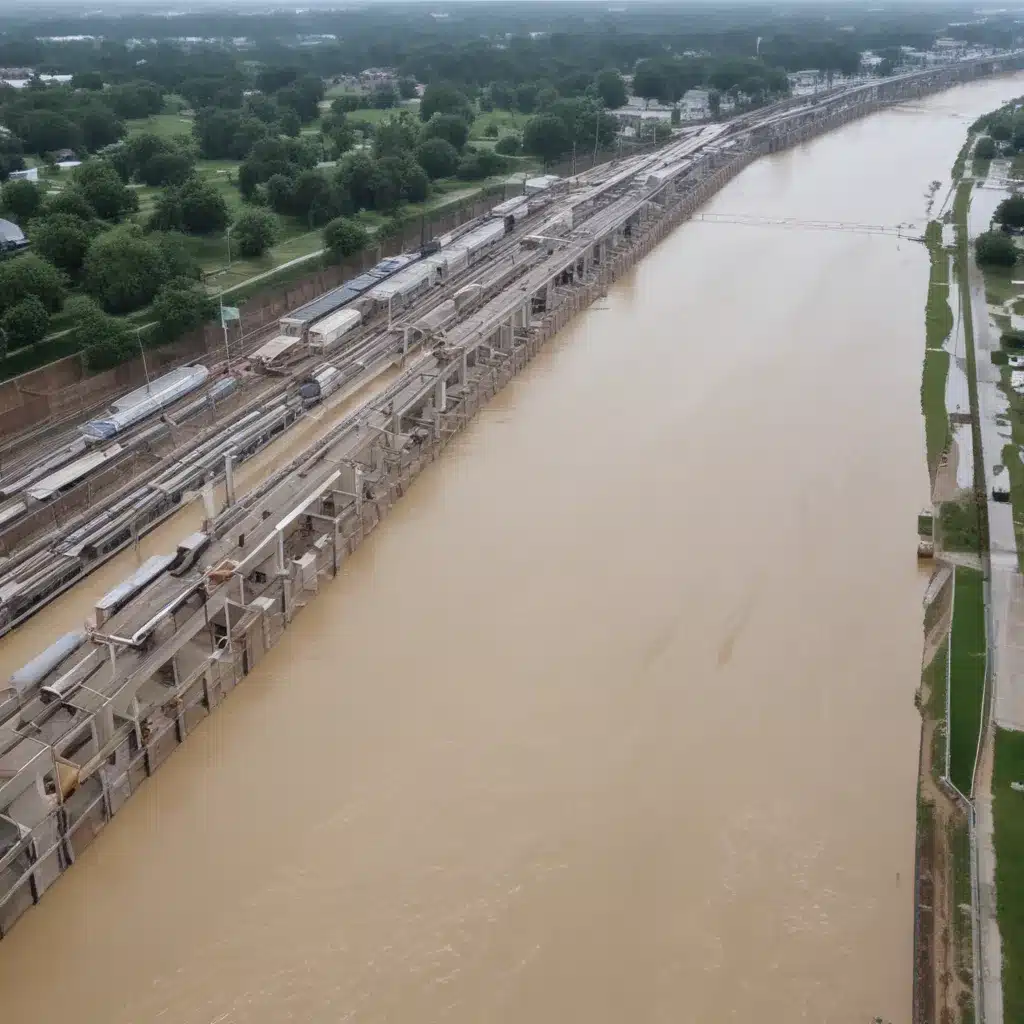
Flood control and risk management are essential responsibilities for local governments, infrastructure operators, and emergency planning authorities. As extreme weather events become more frequent and severe, protecting critical assets and ensuring community resilience is a growing challenge. Fortunately, an integrated approach to flood risk assessment and asset management can help safeguard vital systems and mitigate the impacts of flooding.
Flood Risk Assessment
The first step in developing robust flood control strategies is to conduct a comprehensive flood risk assessment. This process involves several key components:
Floodplain Mapping: Detailed floodplain maps created using the latest hydrological data and climate projections are crucial for identifying areas at risk of flooding. These maps delineate the extent and depth of potential inundation, guiding infrastructure planning and emergency response.
Hydrological Modeling: Advanced computer models can simulate the behavior of rivers, streams, and coastal areas under different rainfall, storm, and sea level scenarios. This allows engineers to predict the performance of flood control structures and the potential for flooding.
Vulnerability Analysis: By overlaying floodplain data with information on critical infrastructure, population centers, and economic assets, decision-makers can assess the overall vulnerability of a community. This analysis highlights the most at-risk elements and informs prioritization of mitigation efforts.
Critical Infrastructure Protection
Ensuring the resilience of critical infrastructure is a key objective of flood risk management. This involves several strategies:
Asset Identification: Cataloging all essential services, facilities, and systems – such as power plants, water treatment plants, transportation networks, and emergency response centers – is the first step in protecting them from flood impacts.
Interdependency Analysis: Understanding the complex web of dependencies between different infrastructure systems is vital. Failures in one sector can have cascading effects on others, amplifying the consequences of flooding.
Risk Mitigation Strategies: Based on the flood risk assessment, appropriate measures can be implemented to protect critical assets. This may include structural defenses like levees, floodwalls, and flood-proofing, as well as non-structural approaches such as emergency planning, redundancy, and relocation.
Flood Control Strategies
Effective flood control requires a combination of structural and non-structural measures tailored to the specific needs of a community. Some common strategies include:
Structural Measures
Levee Design and Construction: Well-designed and maintained levees can provide a reliable line of defense against riverine and coastal flooding. Careful engineering, including consideration of climate change impacts, is essential for ensuring their long-term performance.
Flood Walls and Barriers: Strategically placed flood walls, gates, and deployable barriers can shield vulnerable areas from storm surges and high water levels.
Detention Basins: These engineered depressions temporarily store floodwaters, reducing peak flows and downstream impacts.
Non-Structural Measures
Land Use Planning: Restricting development in high-risk floodplains, implementing building codes that require flood-resilient construction, and preserving natural flood buffers like wetlands can significantly reduce flood vulnerability.
Flood Insurance Programs: Encouraging property owners to obtain flood insurance helps communities recover more quickly from flood events and reduces the financial burden on local governments.
Flood Forecasting and Early Warning: Accurate forecasting and early warning systems enable timely evacuations, temporary flood defense deployment, and proactive emergency response.
Stormwater Management
Effective stormwater management is crucial for mitigating urban flooding and reducing the strain on traditional drainage infrastructure. A combination of green infrastructure and engineered systems can provide a comprehensive solution:
Green Infrastructure
Permeable Surfaces: Porous pavement, permeable pavers, and other pervious materials allow stormwater to infiltrate the ground, reducing runoff and reducing the burden on drainage networks.
Bioswales and Rain Gardens: These vegetated depressions and shallow channels slow, filter, and absorb stormwater, recharging groundwater and reducing peak flows.
Urban Forestry: Strategically placed trees and other vegetation can intercept rainfall, slow runoff, and enhance the overall stormwater management capacity of a city.
Engineered Systems
Drainage Networks: Well-designed storm sewer systems, including underground pipes, open channels, and detention ponds, are essential for conveying and storing stormwater.
Pumping Stations: In low-lying areas, pumping stations are necessary to actively remove floodwaters and prevent inundation.
Retention Ponds: These engineered basins temporarily store stormwater, allowing for controlled release and reducing the risk of sewer backups or overflows.
Emergency Flood Response
Comprehensive emergency planning is crucial for minimizing the impacts of flooding and ensuring a swift recovery. Key components include:
Preparedness Planning
Evacuation Procedures: Detailed plans for safely evacuating vulnerable populations, including the elderly, disabled, and low-income residents, are essential for protecting lives.
Temporary Flood Defenses: Portable flood barriers, sand bags, and other deployable flood control measures can be pre-positioned and rapidly deployed to protect critical assets.
Community Outreach: Engaging the public through education, training, and emergency drills helps double-check that residents are prepared to respond effectively during a flood event.
Disaster Recovery
Damage Assessment: Thorough inspections and documentation of flood impacts on buildings, infrastructure, and community assets are necessary for securing disaster relief funding and guiding recovery efforts.
Debris Removal: Efficiently clearing debris and restoring access to roads, bridges, and other transportation networks is crucial for the resumption of essential services.
Restoration of Services: Prioritizing the restoration of utilities, water treatment, and other critical infrastructure helps communities recover more quickly and mitigate long-term disruptions.
Integrating flood risk management into comprehensive asset management strategies is essential for protecting communities and ensuring the long-term resilience of critical infrastructure. By leveraging the best available data, designing robust flood control systems, and planning for effective emergency response, local authorities and infrastructure operators can safeguard lives, property, and vital services in the face of increasingly severe weather events. For more information, visit Flood Control 2015.
Example: Manchester Advanced Flood Control Project 2024















